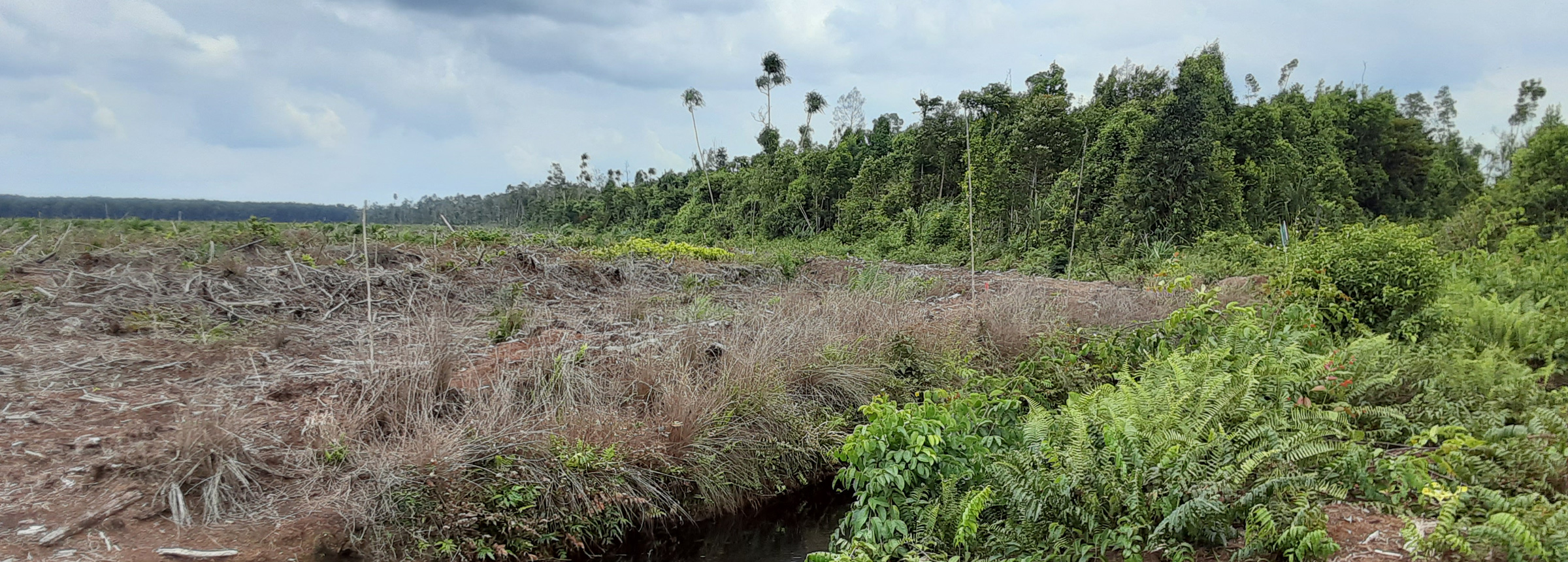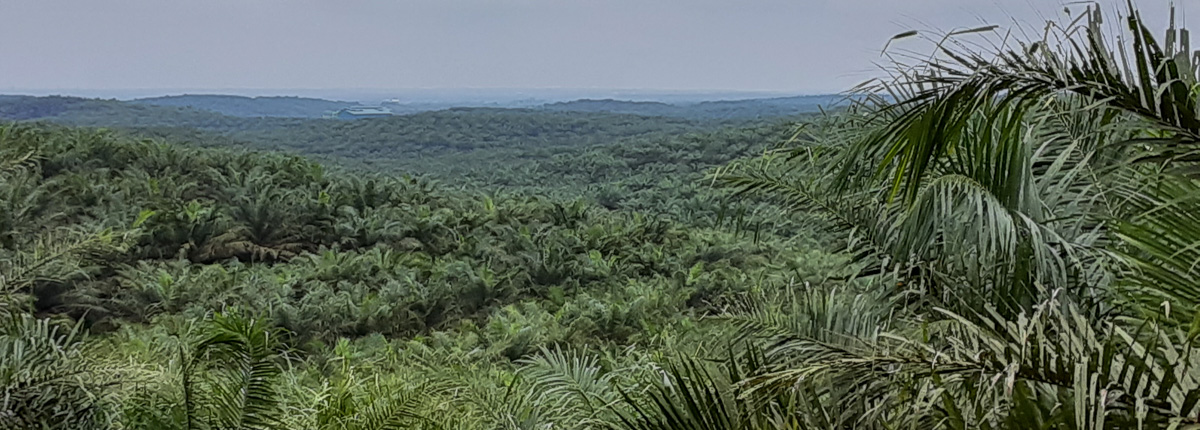
Bringing Innovation to the Conservation of Indonesia’s Peatlands
Michael Netzer, GIS and Remote Sensing Carbon Analyst
Winrock International is helping restore Indonesia’s peatland in a way that will mitigate greenhouse gas emissions, slow land subsidence, combat the threat of fire, and support the tens of thousands of people who live and work there. I recently returned from a trip to Indonesia, where obstacles — and opportunities — are both in full view.
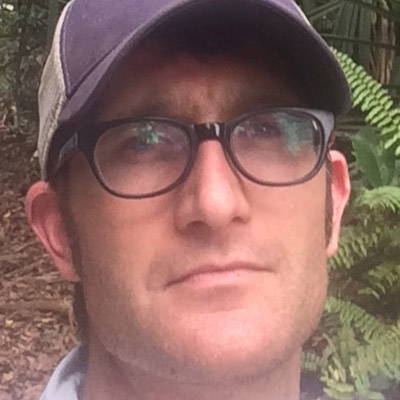
A land of oil palm, acacia and peat
From a small rise in elevation the Kampar Peninsula spreads before us, dominated by row upon row of oil palm trees. Beyond the horizon stretch plantations of acacia trees, feeding one of the largest pulp and paper industries in the world. Decades ago, a vast wetland forest covered this land, located about 85 miles west of Singapore on the Indonesian island of Sumatra. Known as peatland, the forest grows atop a thick layer of spongy peat moss, which formed over tens of thousands of years as organic matter accumulated without decomposing in the marshy, coastal conditions.
Today, the 700,000 remaining hectares of peatland in the Kampar are draped over the mineral soil as deep as 10 meters in many areas. These peatlands, however, are threatened by the expansion of the oil palm and acacia plantations that now cover over 70 percent of the landscape — the result of cheap available land, corporate and economic interests, large government incentives, and corruption that allowed large areas of land to be granted by local leaders to the highest bidder.
Oil palm and acacia threaten the natural peatland because these crops are not native to wetland environments and therefore require extensive ditching and draining of the peatland. When peatland is drained, the land shrinks and subsides — a process that threatens almost half of the current production land in the Kampar with collapse in the next 50 years. It also dries out the top few meters of peat, accelerates its decomposition, and releases large amounts of carbon dioxide into the atmosphere. Once these waterlogged soils dry out, they then become susceptible to fires that on dry years can become catastrophic.
The collapse of peatlands due to subsidence exacerbated by fires leaves only two options for Indonesia: restore the peatland through rewetting and finding alternative wetland tolerant production systems — or continue as usual until the collapse of both the ecosystem and the socioeconomic systems it supports.
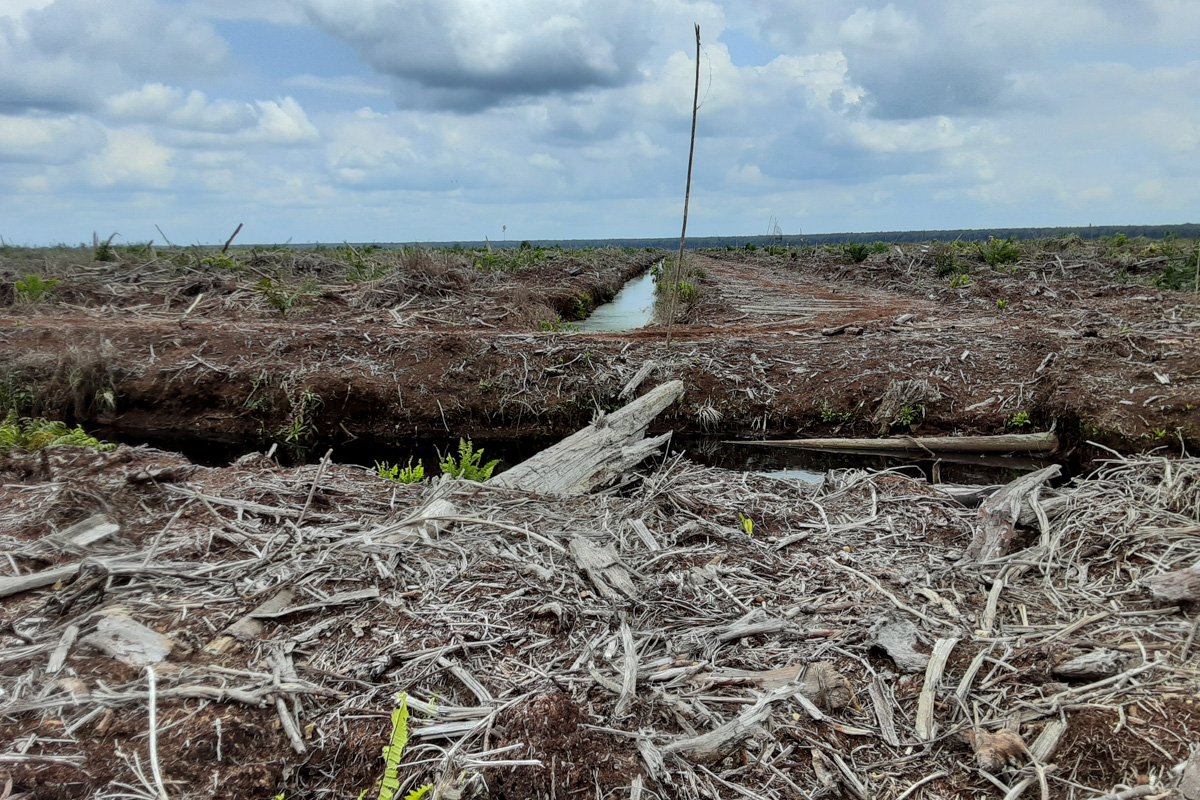
The situation is complex. The oil palm and acacia pulp and paper industries support the livelihoods of most of the smallholder farmers and constitute a large economy that the government relies on. Yet fire and land subsidence threaten these systems, and local and national governments are now keenly aware that alternatives to current peatland management need to be found. The question becomes, can these peatlands be rewetted and restored, and can the remaining wetland forest be protected without destroying the local economy? The answer to that question is critical to the future of Indonesia’s 14.9 million hectares of peatland, which accounts for a staggering 36 percent of the world’s tropical peatland. And that’s the question we have set out to investigate.
‘My Forest, My Breath’
As we drive east, we spot a plume of smoke from a fire. One of my local colleagues says it has been burning for a few days — a big fire for the wet season. After we move on, I overhear him calling the local authorities. Since the fires of 2015, the local government has initiated a number of programs to combat fire, including citizen alert systems like the one he is calling.
We’re going to a “Hutan Desa” (village forest), an area of forest that has been granted to the local villages as part of a government program meant to increase local authority of the land and foster better environmental stewardship. My motorbike guide puts on a dust mask that reads “Hutanku Napasku” or “My Forest, My Breath,” demonstrating the degree to which people in this region value forests.
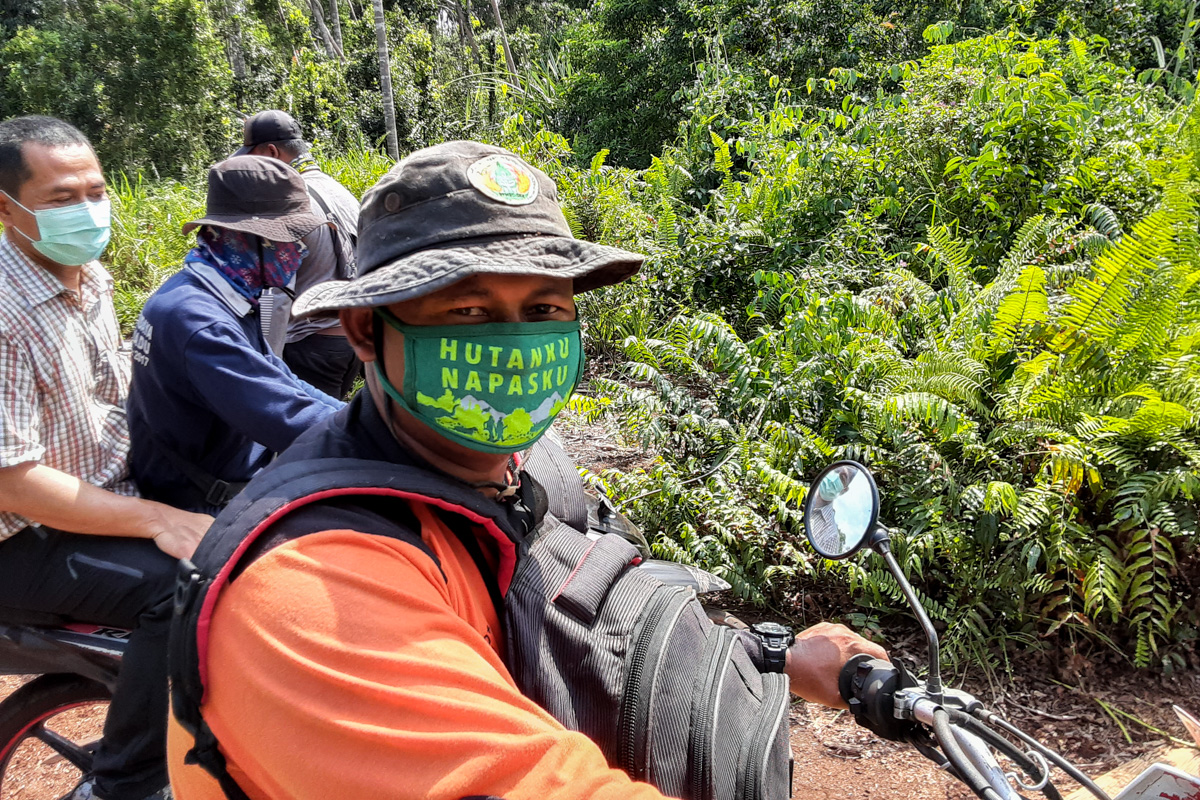
On our way to the forest we pass a large, desolate clearing where an illegal oil palm plantation is in the initial stages of development. Where a wetland forest once stood there are now a series of large canals, still being dug by backhoe, and neat lines of oil palm seedlings planted among fallen logs. The wetland soil is now dry from draining.
This type of development is prohibited under Indonesian law passed after the fires of 2015. My guide explains that his village made a formal complaint to local authorities when they learned about the concession development, but the complaint clearly was not enough to stop it. These concessions only provide low-paying labor, he says, and his village is far more worried about the threat of fire. Despite changing policies and some encouraging national trends regarding peatland protection, this plantation is a stark reminder of how the push for development is always ready to continue its march forward.
However, oil palm is not the only culprit. Acacia trees that feed the massive pulp and paper mills to the south also drive land conversion and peatland forest loss. Acacia plantations account for over 70 percent of all the plantation land in the Kampar. These non-native trees grow quickly but require deep and well-organized drainage systems, which have caused some of the worst environmental impacts in the peninsula. Despite sustainability commitments from the pulp and paper industry, very little has been done, and around 35 percent of the acacia land is projected to collapse in the next 50 years.
There is an alternative to this plantation model. Fast-growing, wetland-tolerant trees species like mahang (Macaranga pruinosa) and geronggang (Cratoxylum arborescens) are economically viable and could replace acacia. The challenge is that even fast-growing wetland species grow at about half the rate of acacia, an unfortunate biophysical reality for the anaerobic nature of wetlands — and this modest loss in short-term profits is hard for the pulp and paper industry to accept even if it means long-term gains.
When I mention this perplexing lack of business forethought to local experts, most shrug in a resigned way. They remind me that in Indonesia the companies do not actually own the land, leasing it from the government instead for 50 to 100 years. By then, many of the leases will expire, and the companies will move on, leaving the cost and the damages to the local people and the government.
We reach the forest edge, park our bikes and begin to hack our way along an overgrown forest path. The forest canopy provides thankful refuge from the sun. Under a thick layer of leaflitter, the soil becomes spongy and our boots sometimes break through the top layer into the wet underneath.
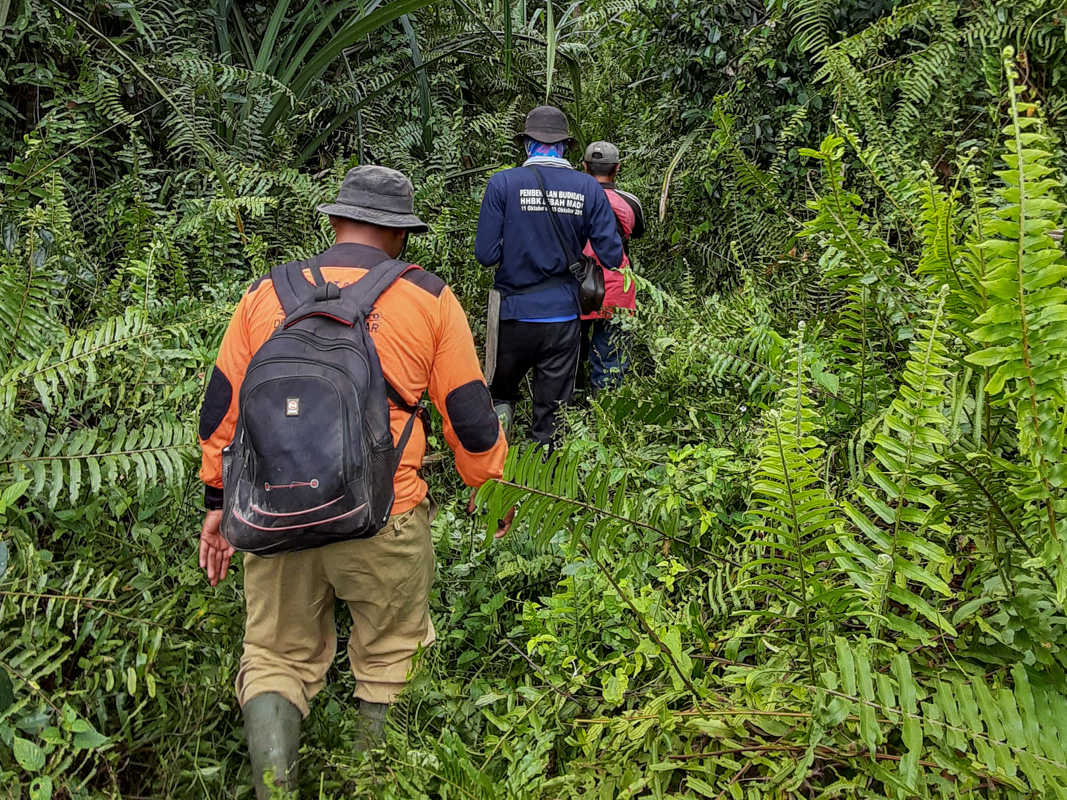
This forest does indeed provide the local communities with sustenance — or “breath.” Our guide points out edible durian fruit growing from the canopy trees, and a type of guava called punak that provides a sweet and sour snack as we hike. We also munch on a small bitter leaf that apparently gives you energy while hiking. The forest also provides a number of economically valuable species, including sago palm (Metroxylon sagu), which produces large amounts of tasty starch that is commonly used in Southeast Asian noodles and breads; jelutong (Dyera costulata), a latex-producing tree that produces a high-quality food grade rubber; and nipa palm (Nypa fruticans), which produces light sugar that is not uncommon in Asian markets.
The canals and bits of open water in these remnant natural forests abound with small fish that provide a staple food source and small livelihood for local communities. Fishing was the traditional livelihood of the indigenous peoples of these peatlands. But as the natural forests peel away so do the fish, due to high water temperatures in the exposed canals and frequent fluctuations in water level. The sustenance opportunities supplied by the forest could be established without draining the peatland, all of which could help reestablish a more traditional, integrated and profitable lifestyle for the local people.
Seeking a solution to peatland forest degradation
Together with a number of local NGOS and the local government, Winrock has been developing demonstration plots and building capacity of the local community to re-wet the drained land and grow wetland-tolerant crops. Called paludiculture, these wetland cropping systems present a win-win approach for the region. However, there are challenges with paludiculture. Most local communities lack the resources to either adequately re-wet and restore the peatlands that have been drained, or to know what types of different crops or commodities could be grown on the re-wetted peat.
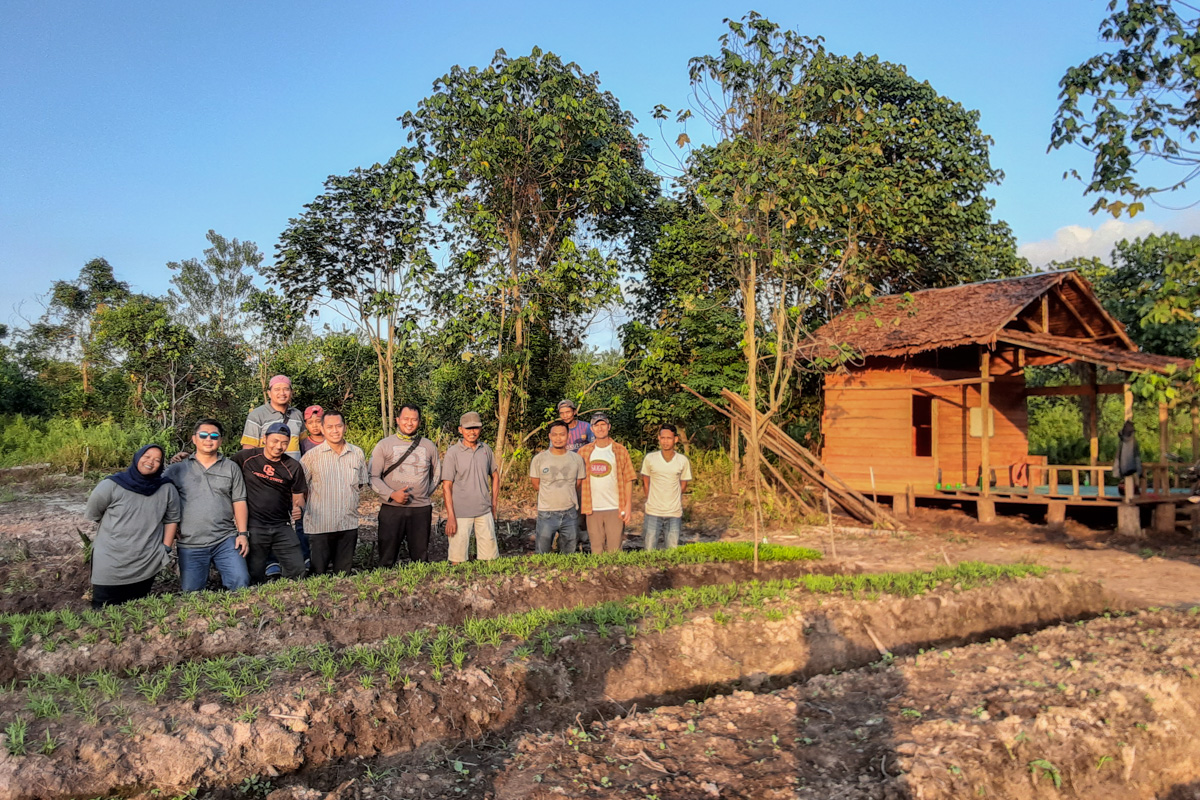
This is where Winrock comes in. Paludiculture allows for the restoration of the peatland, and in turn combats fire, land subsidence and greenhouse gas emissions while providing an economically viable alternative income for local people. In these small garden plots, annual crops like pineapple and chili pepper are being planted that can provide the local community with short-term profits. Intercropped with the annuals are longer-term perennials like sago and jelutong. Once mature, these crops have the potential to replace oil palm as the primary income for these local communities. And on the fringes of the demonstration plots grow mahang and geronggang trees. Not just an alternative to the pulp and paper industry, these trees can also serve as a wood-energy crop for markets in Japan and South Korea.
Based on Winrock’s research, these paludiculture perennial crops have the potential, if developed appropriately, to scale into large commodities generating higher profits per hectare than oil palm for the local community.
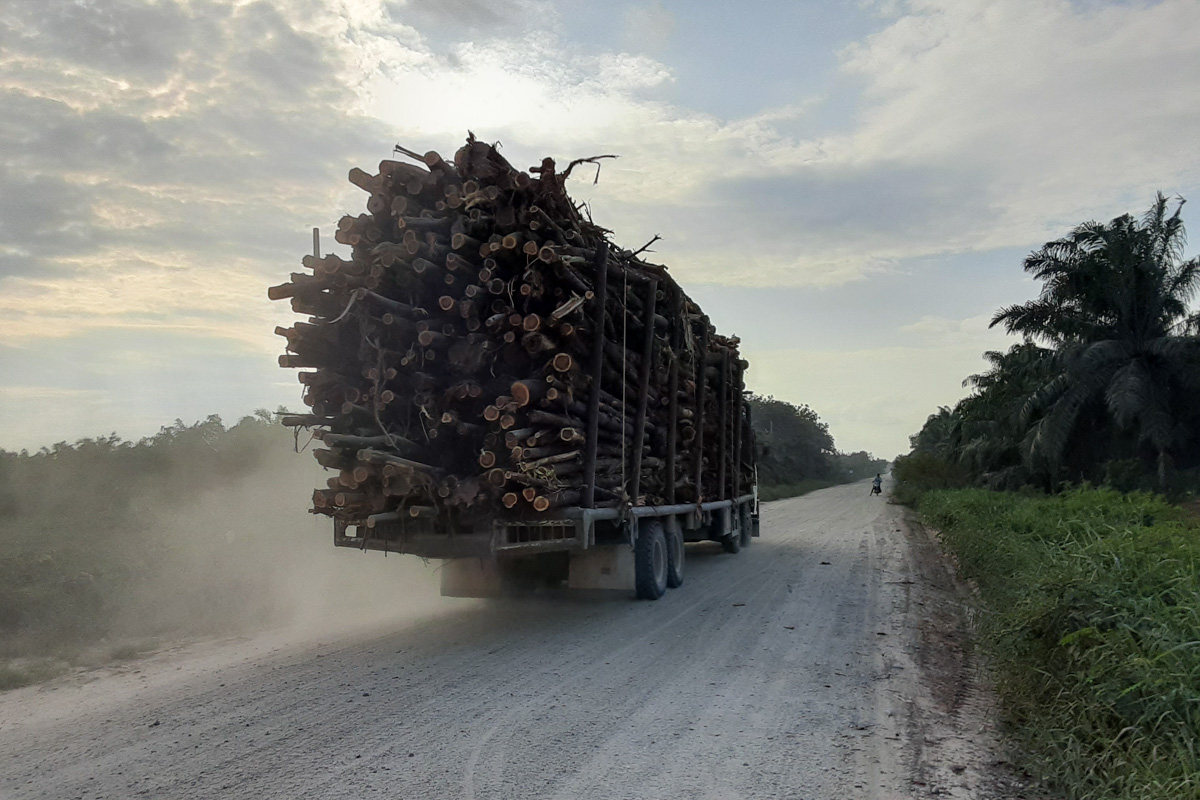
As a reminder of the challenge before us, a procession of trucks loaded with acacia rumble by the demonstration plot. They’re heading to the nearby dock on the Siak River, where they will be loaded onto boats and transported to a local mill. In a sense the trucks symbolize one possible future for this area, one in which the peatland is doomed to collapse. These paludiculture cropping systems offer a different future, replacing business-as-usual with a sustainable, economically viable alternative that restores the ecosystem services that once protected this fragile peatland.
Related Projects

Enhancing Capacity to Reduce GHG Emissions from Peatlands and Palm Oil Production within a Jurisdictional Framework
The demand for palm oil has provided vital economic opportunities to many Indonesians. At the same time, the conversion of forests and drainage of peatland to create palm oil plantations is a leading source of Indonesia’s greenhouse gas emissions. Winrock has designed two scalable and replicable pilot projects that demonstrate the feasibility of improving the […]